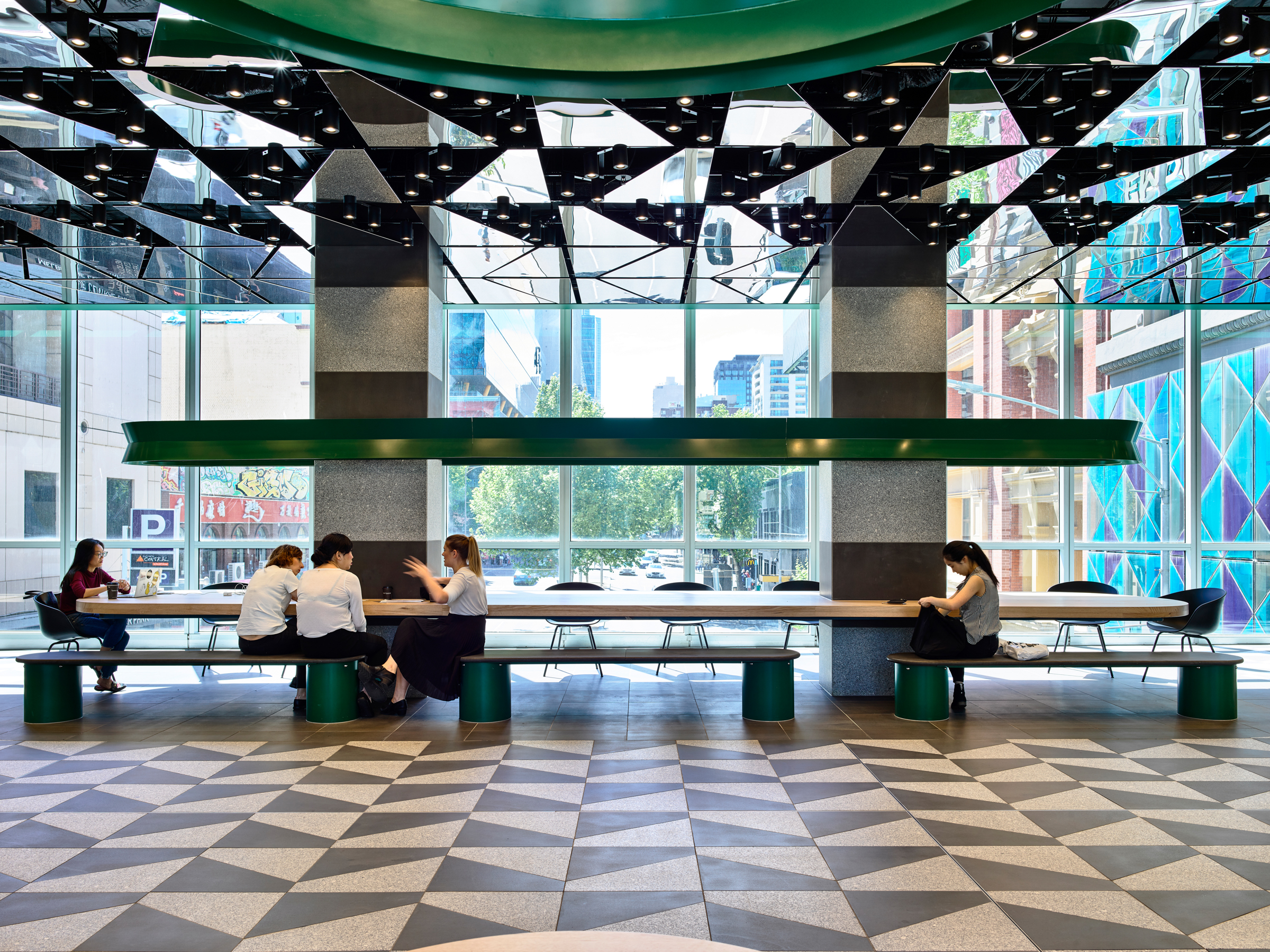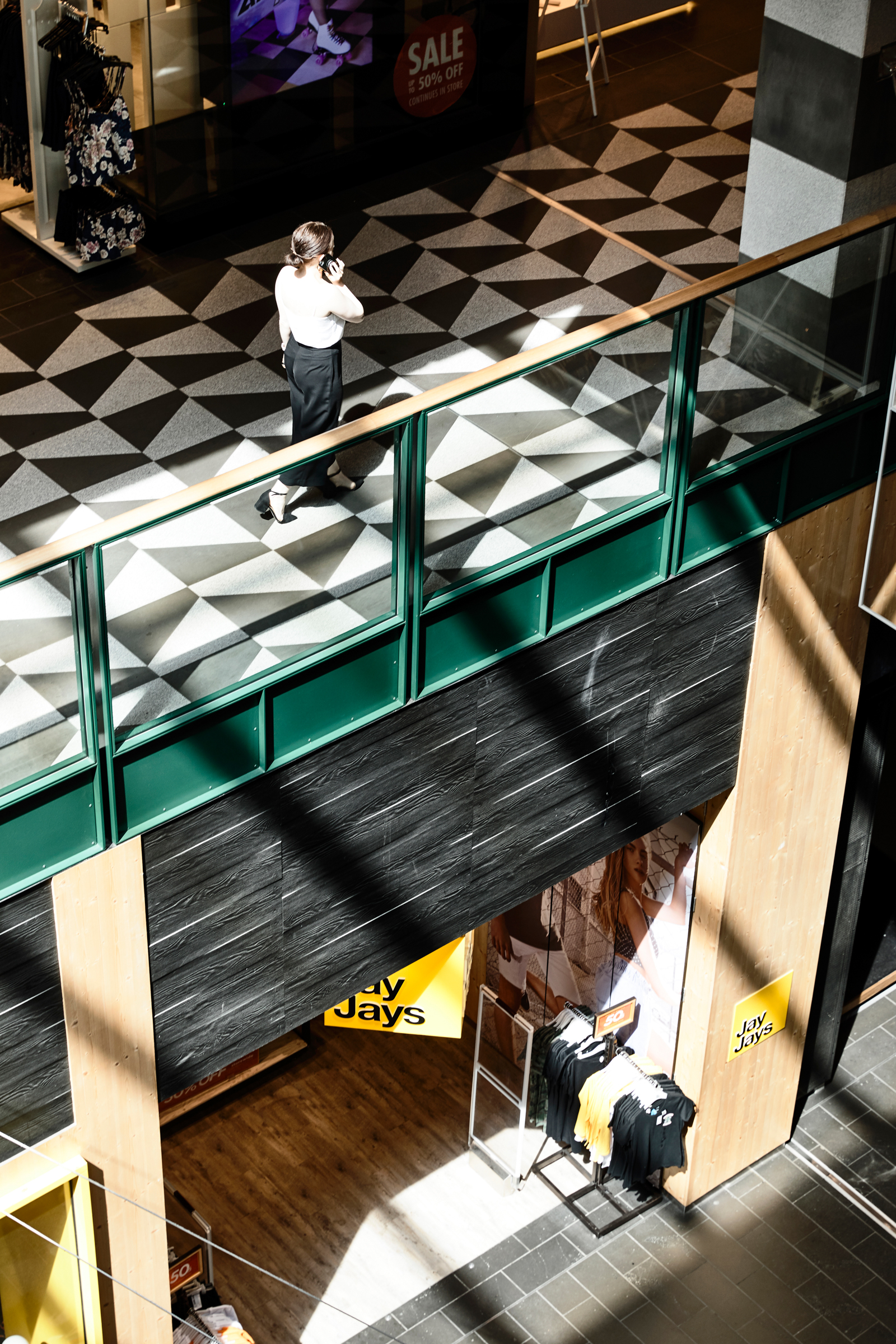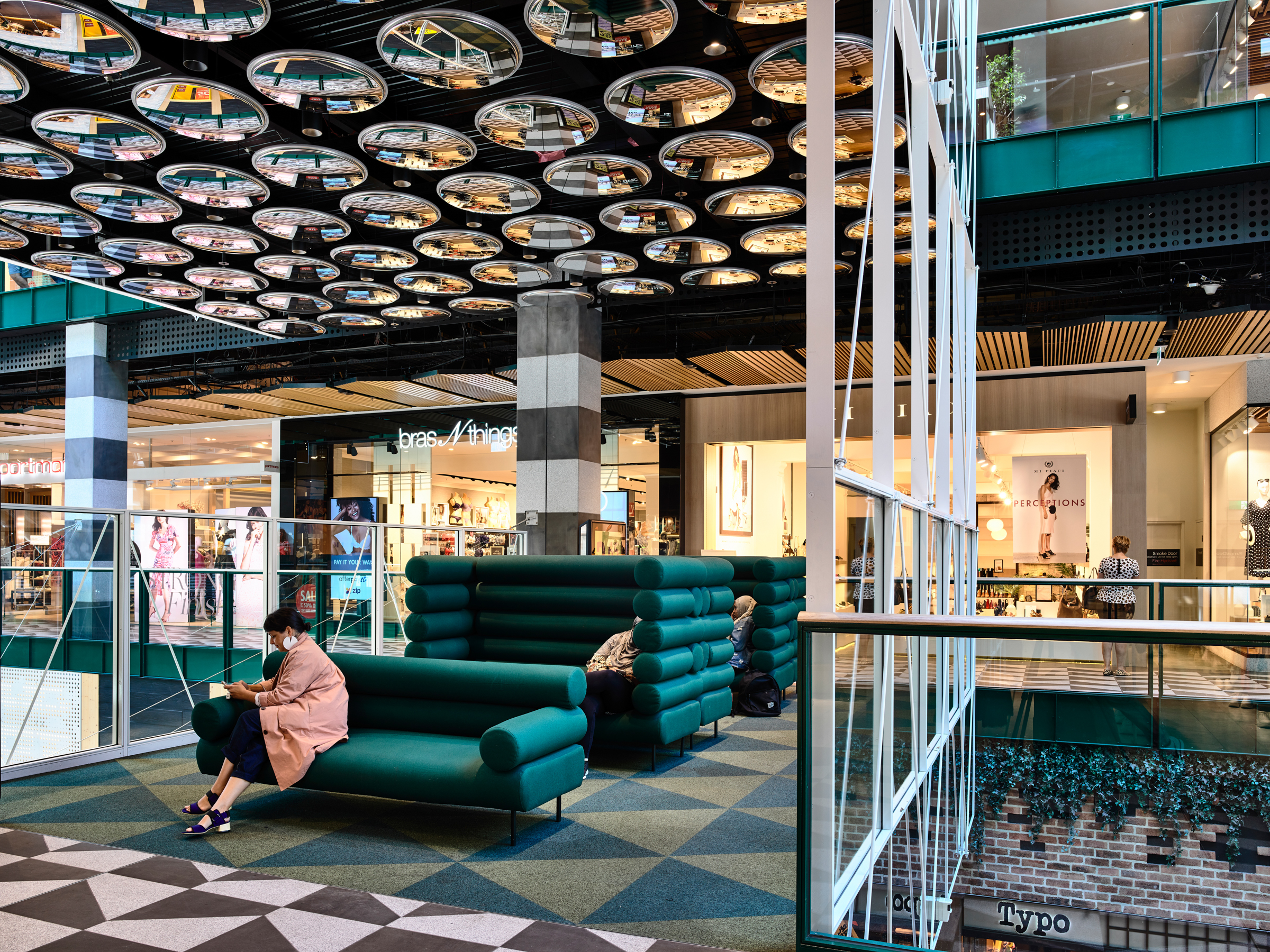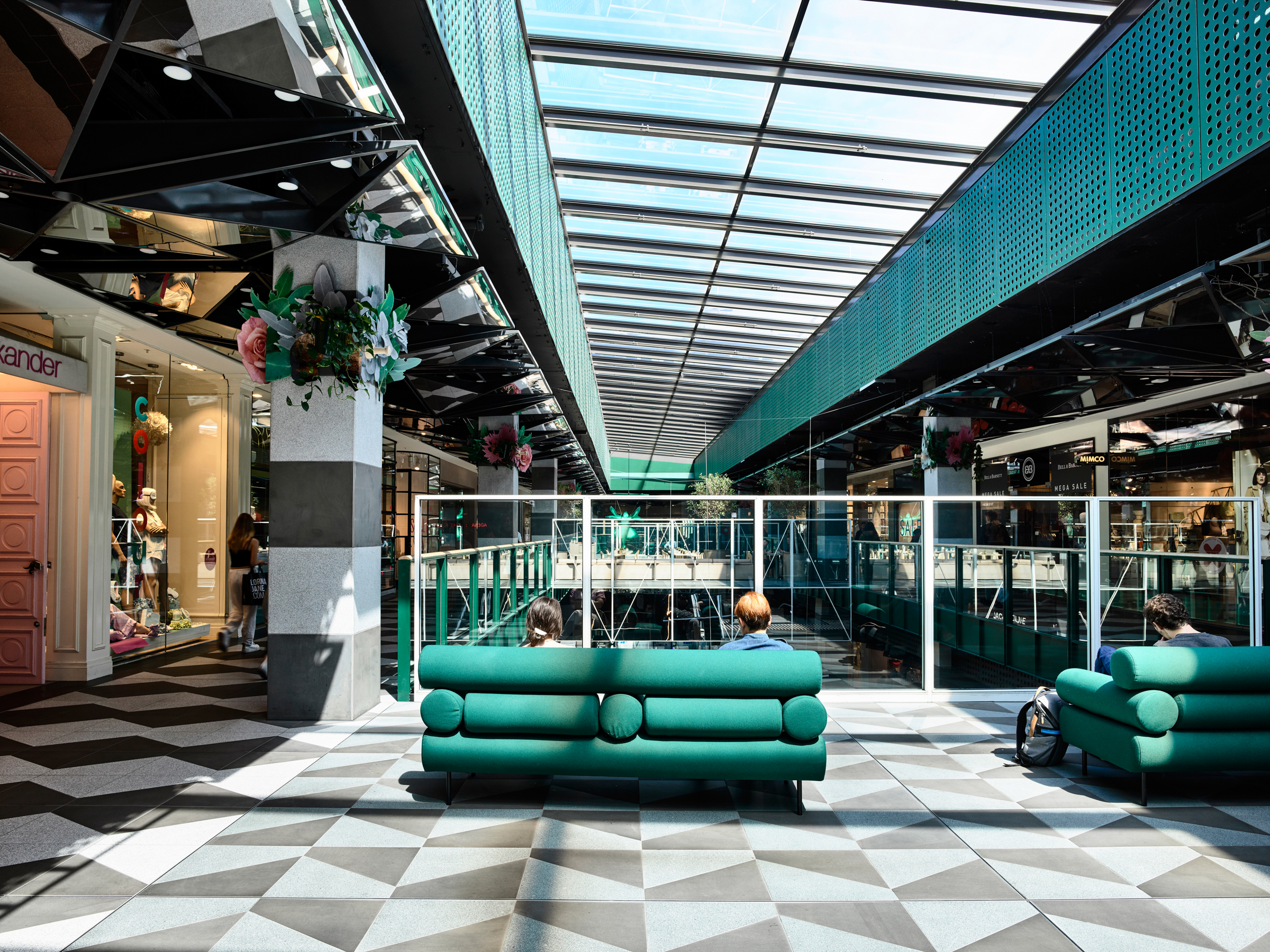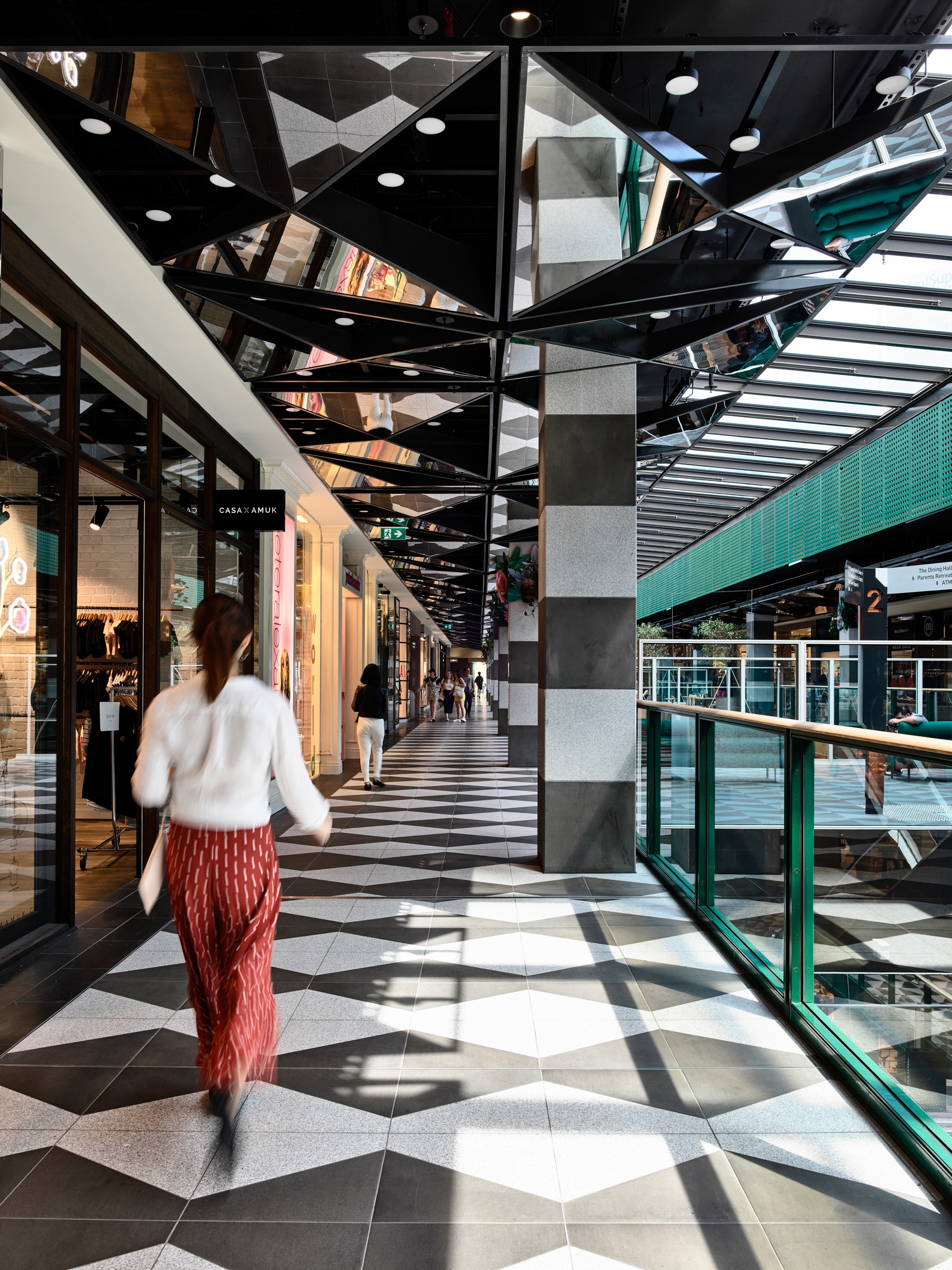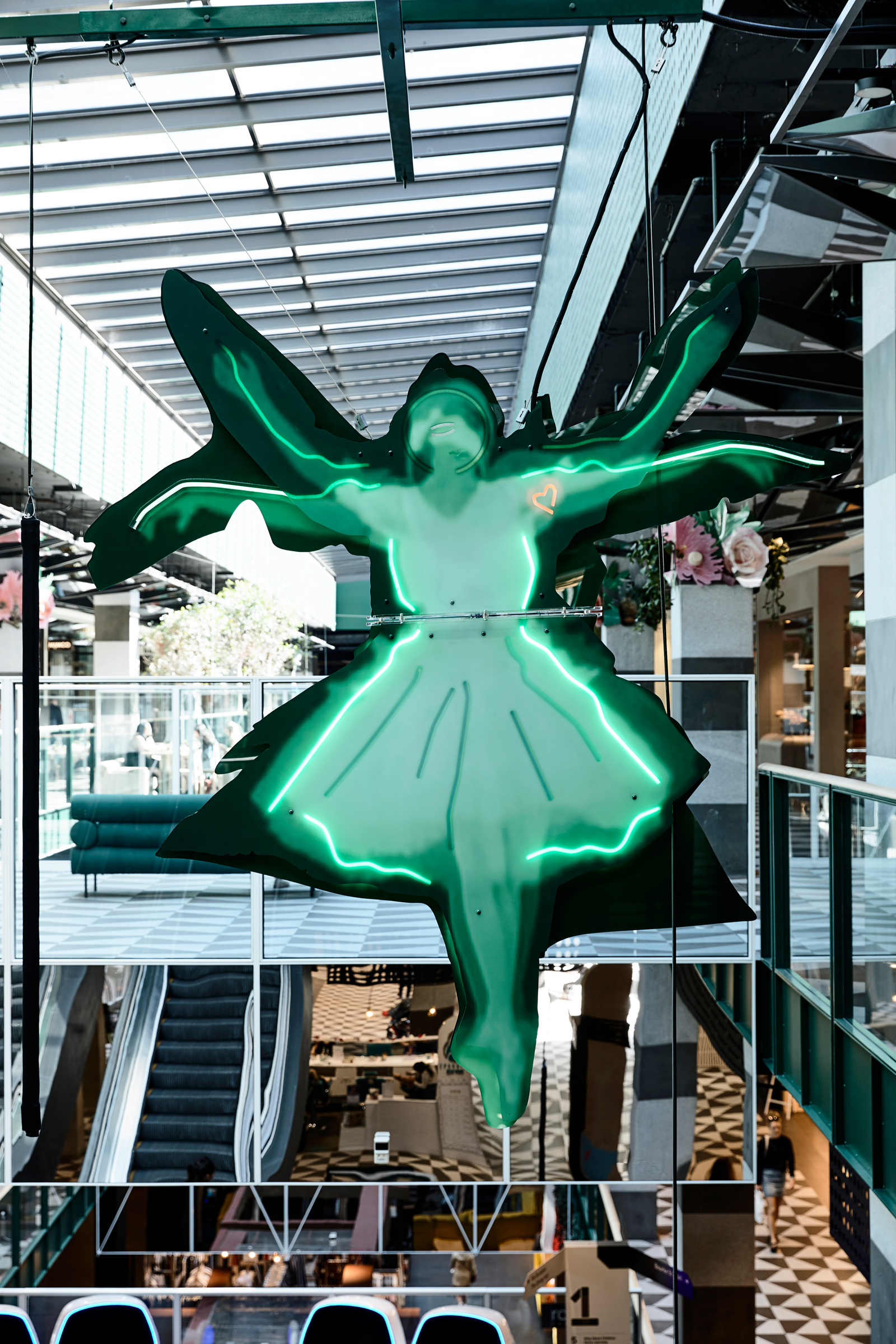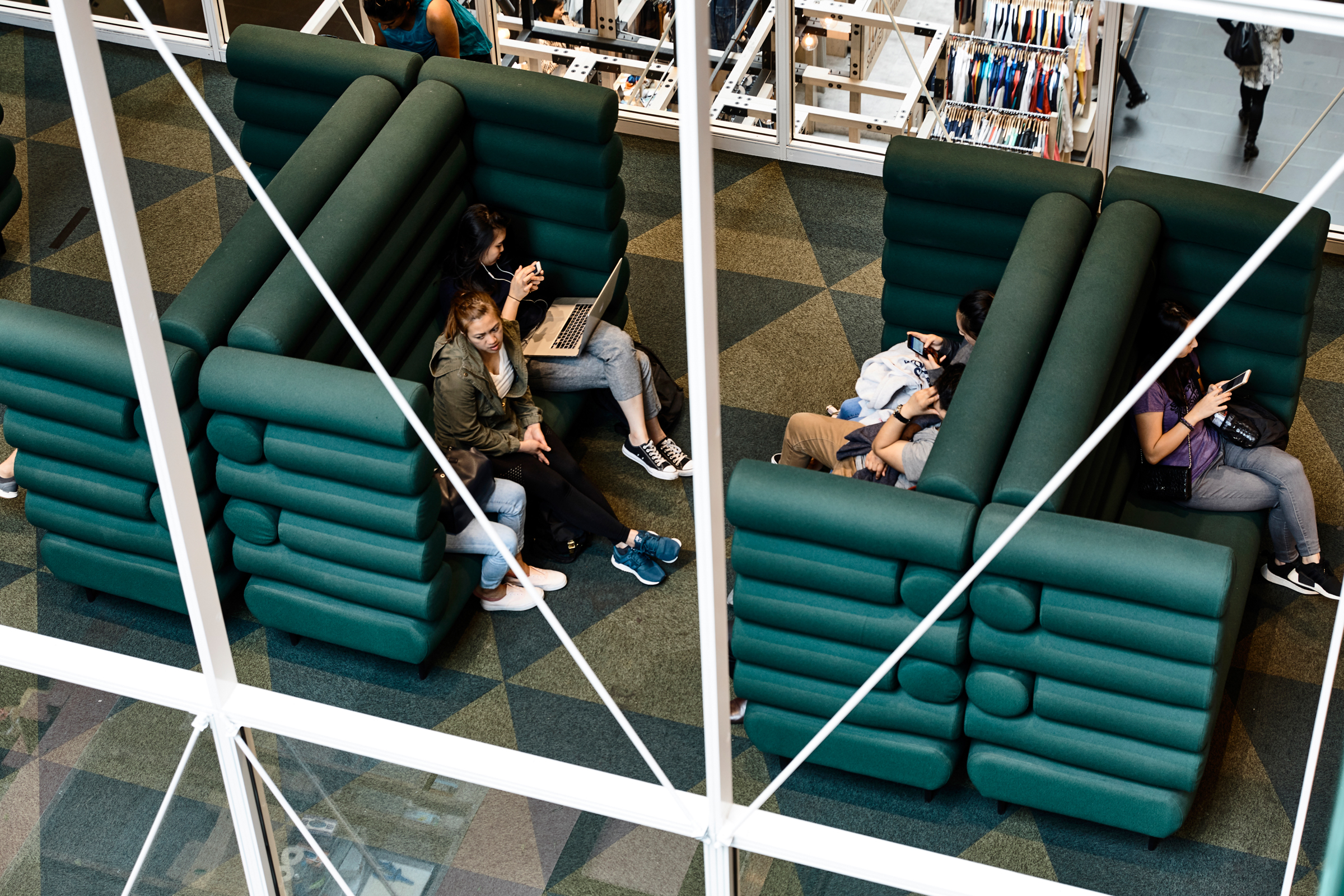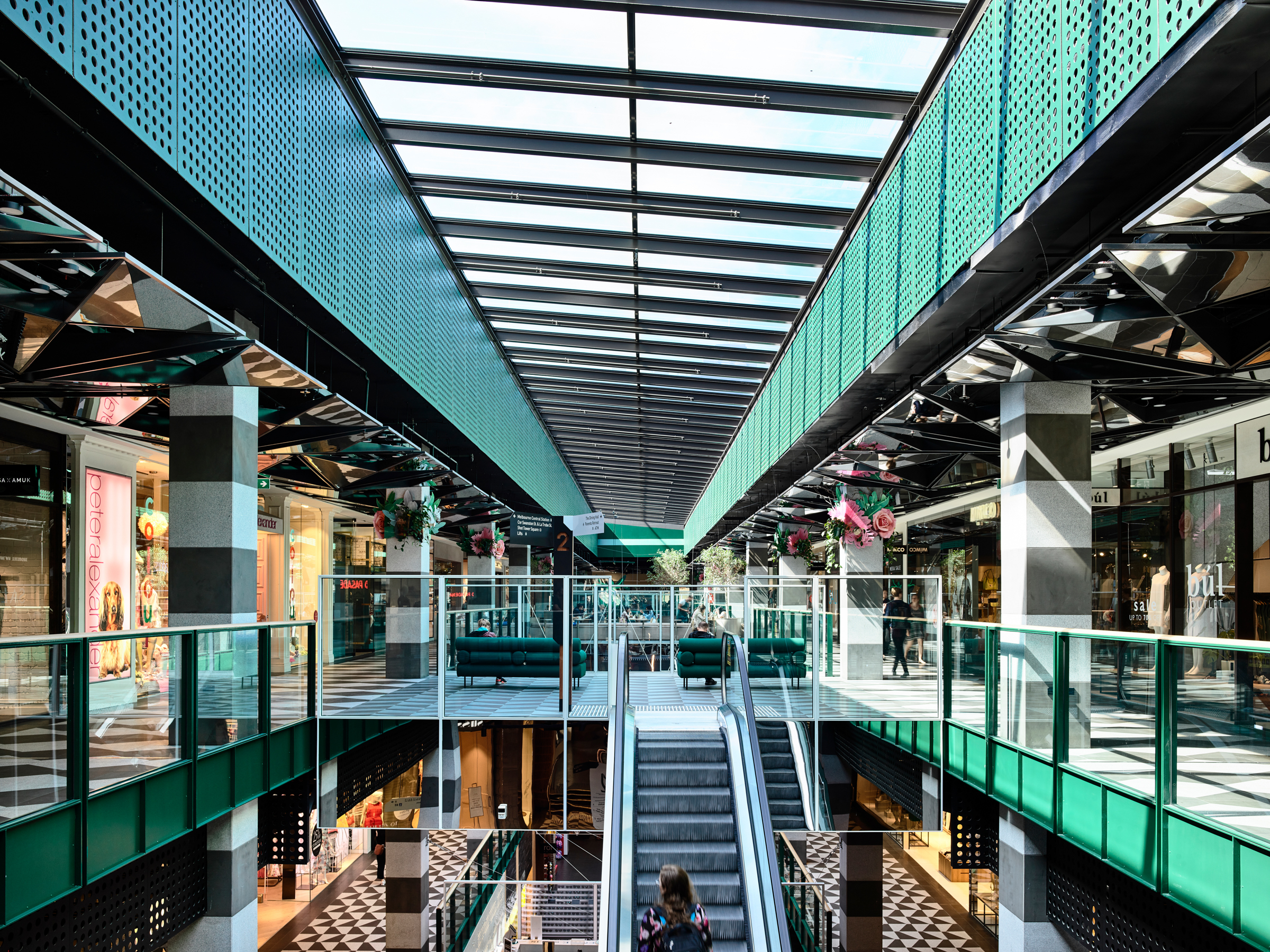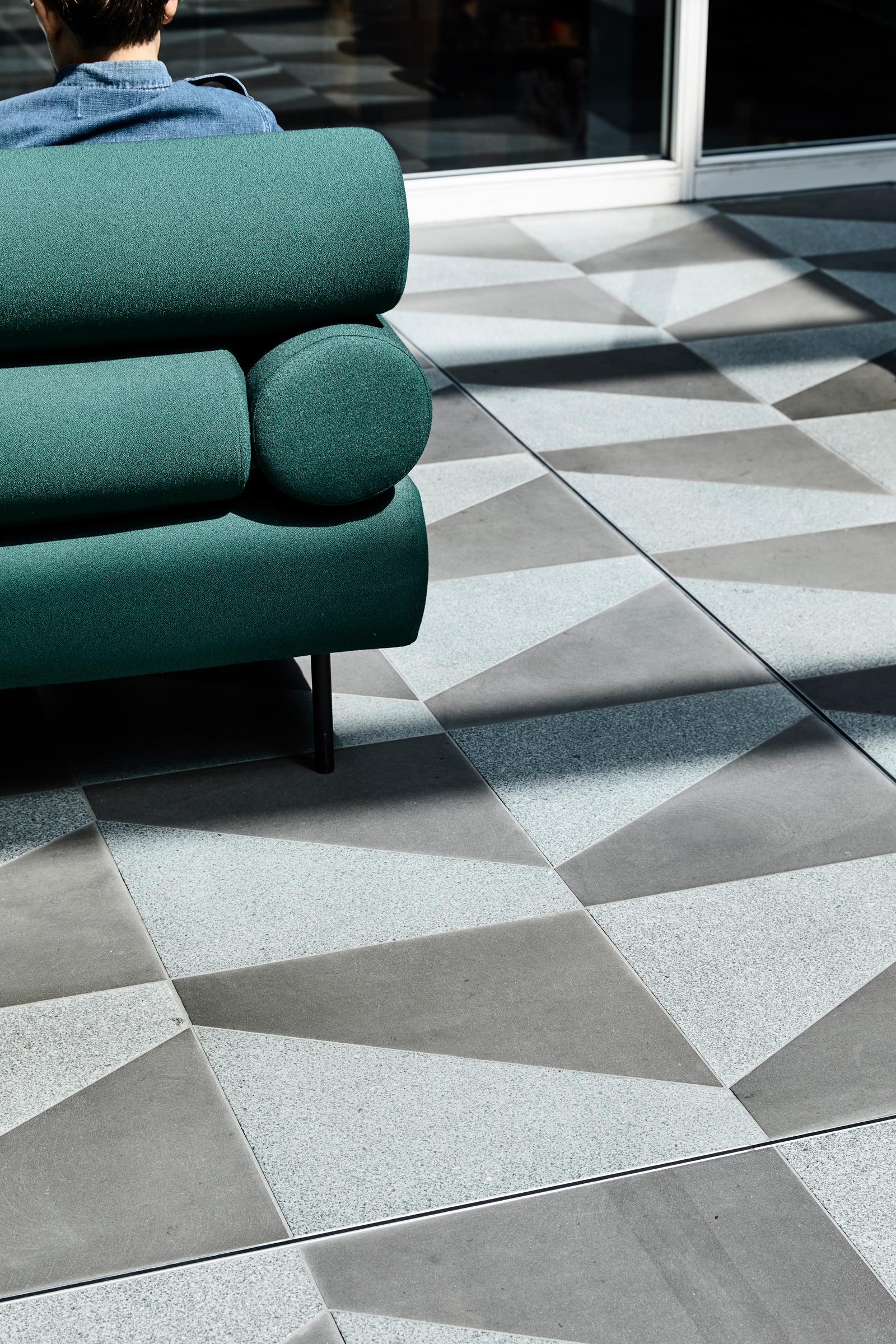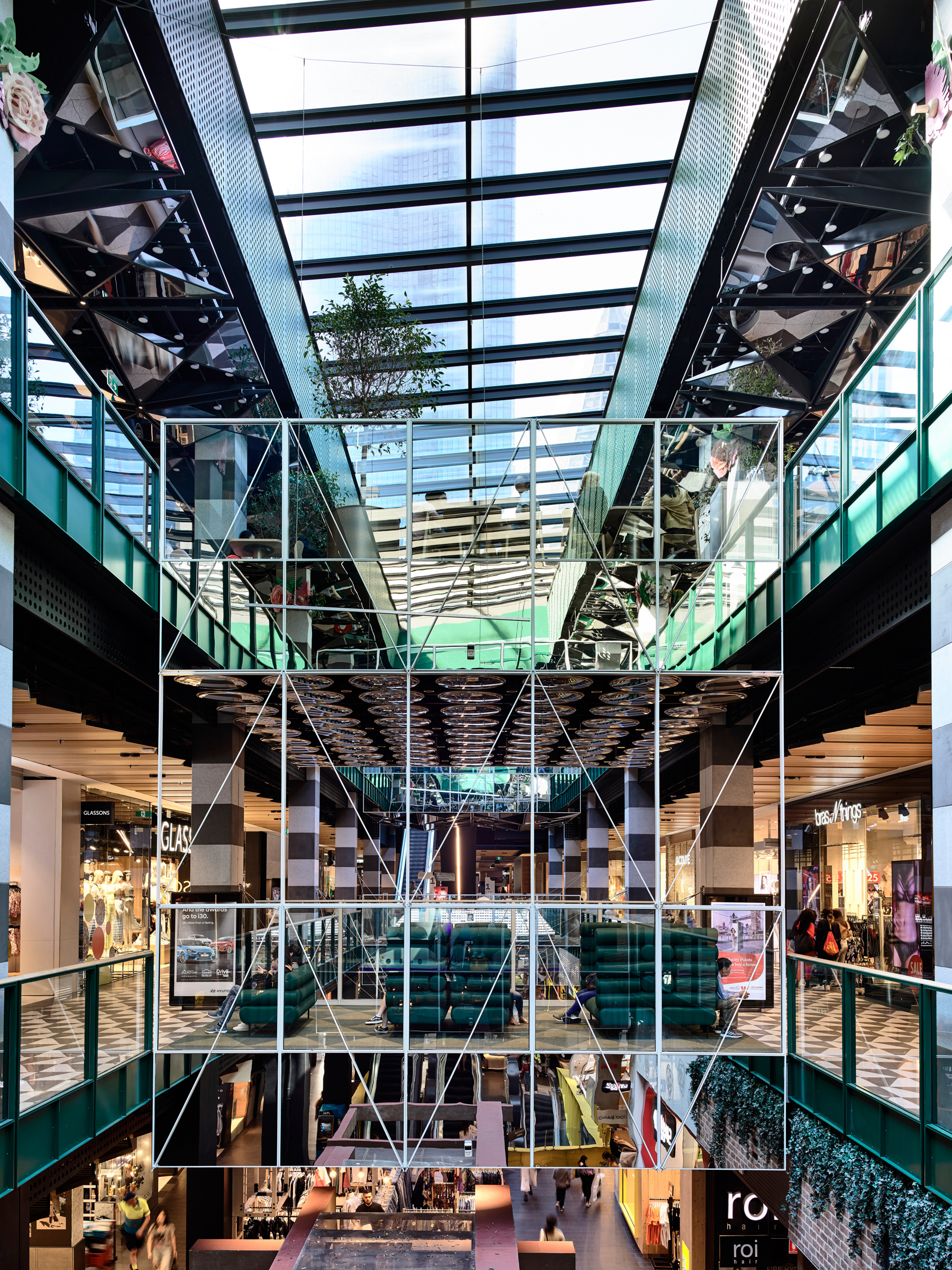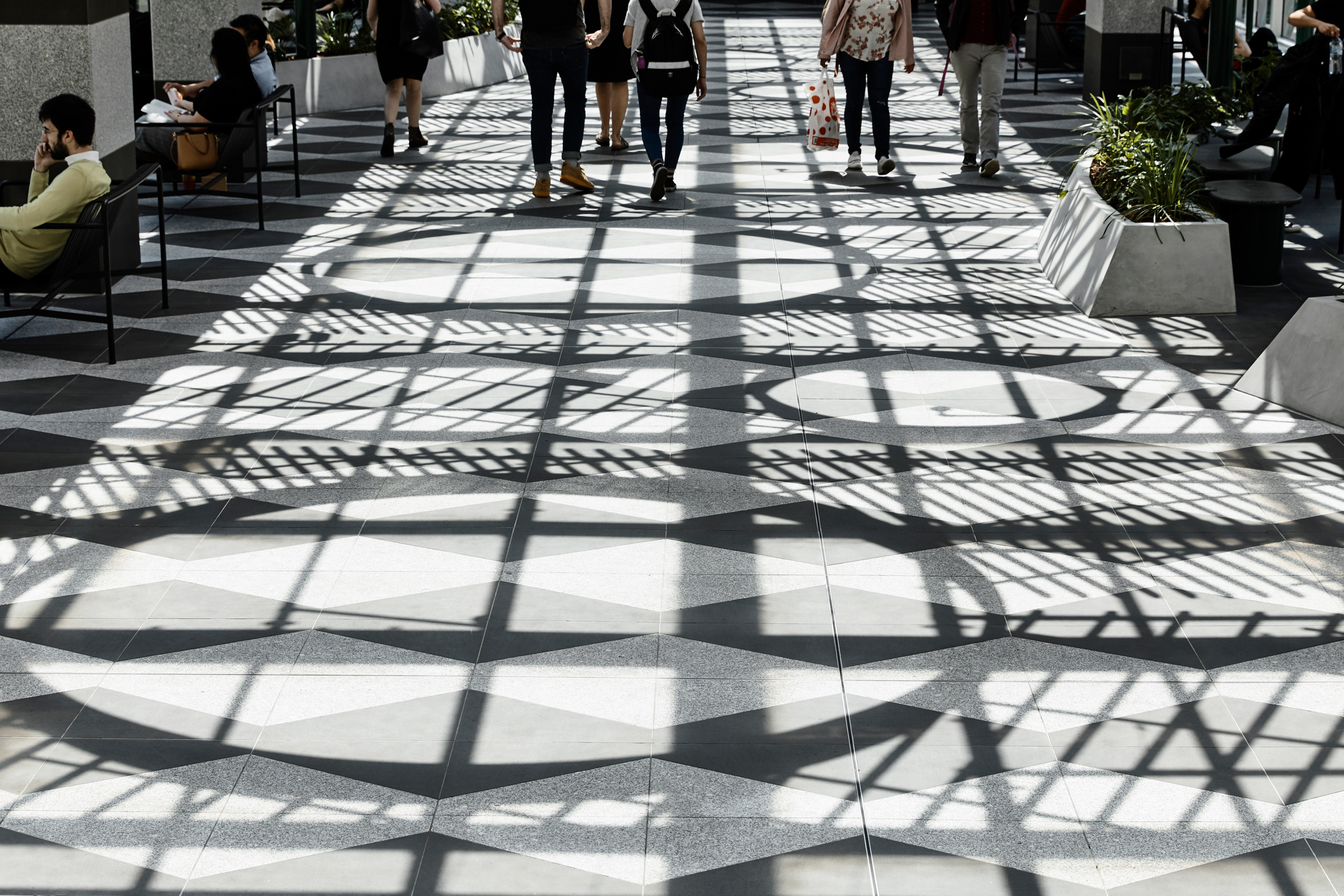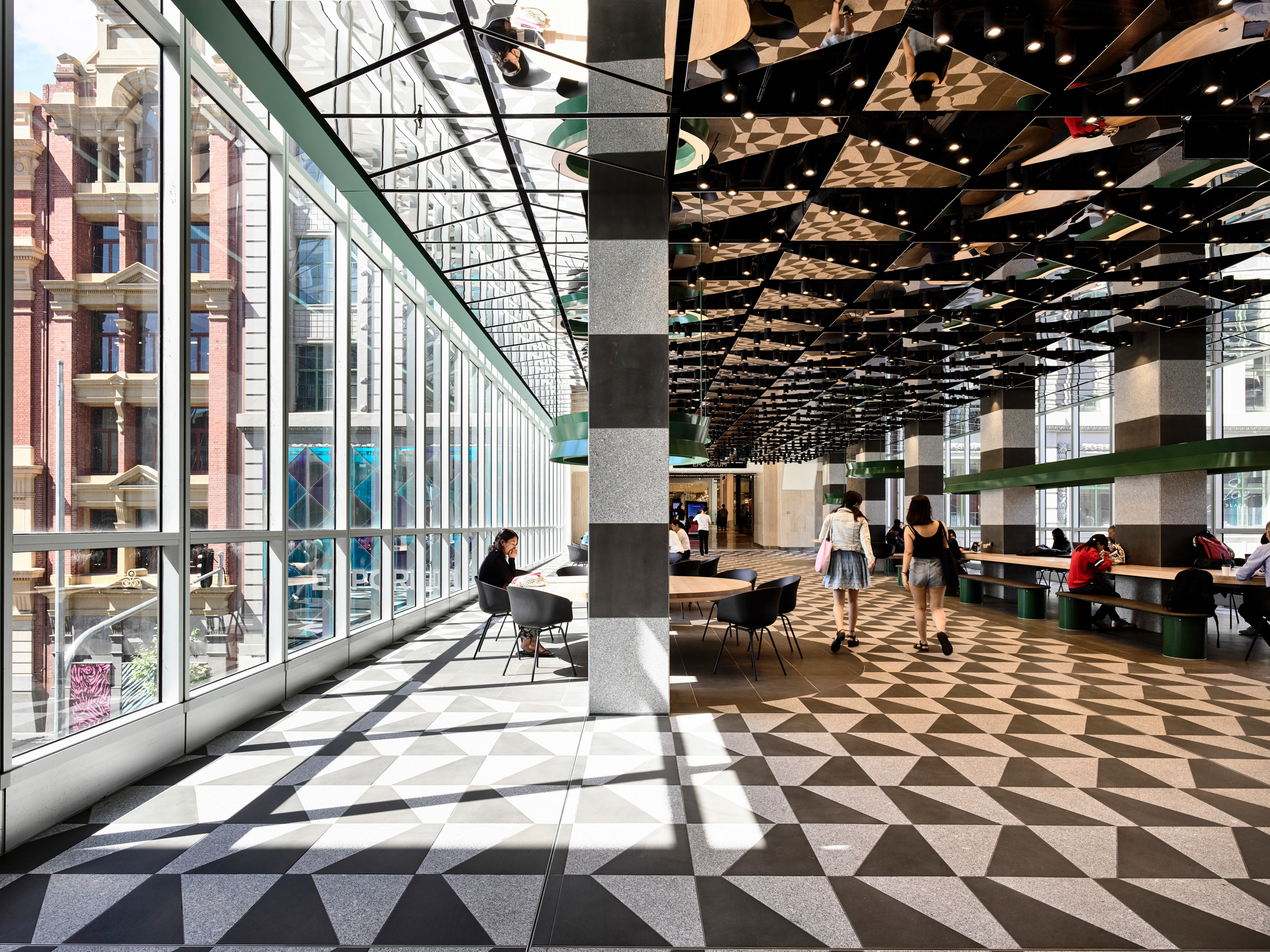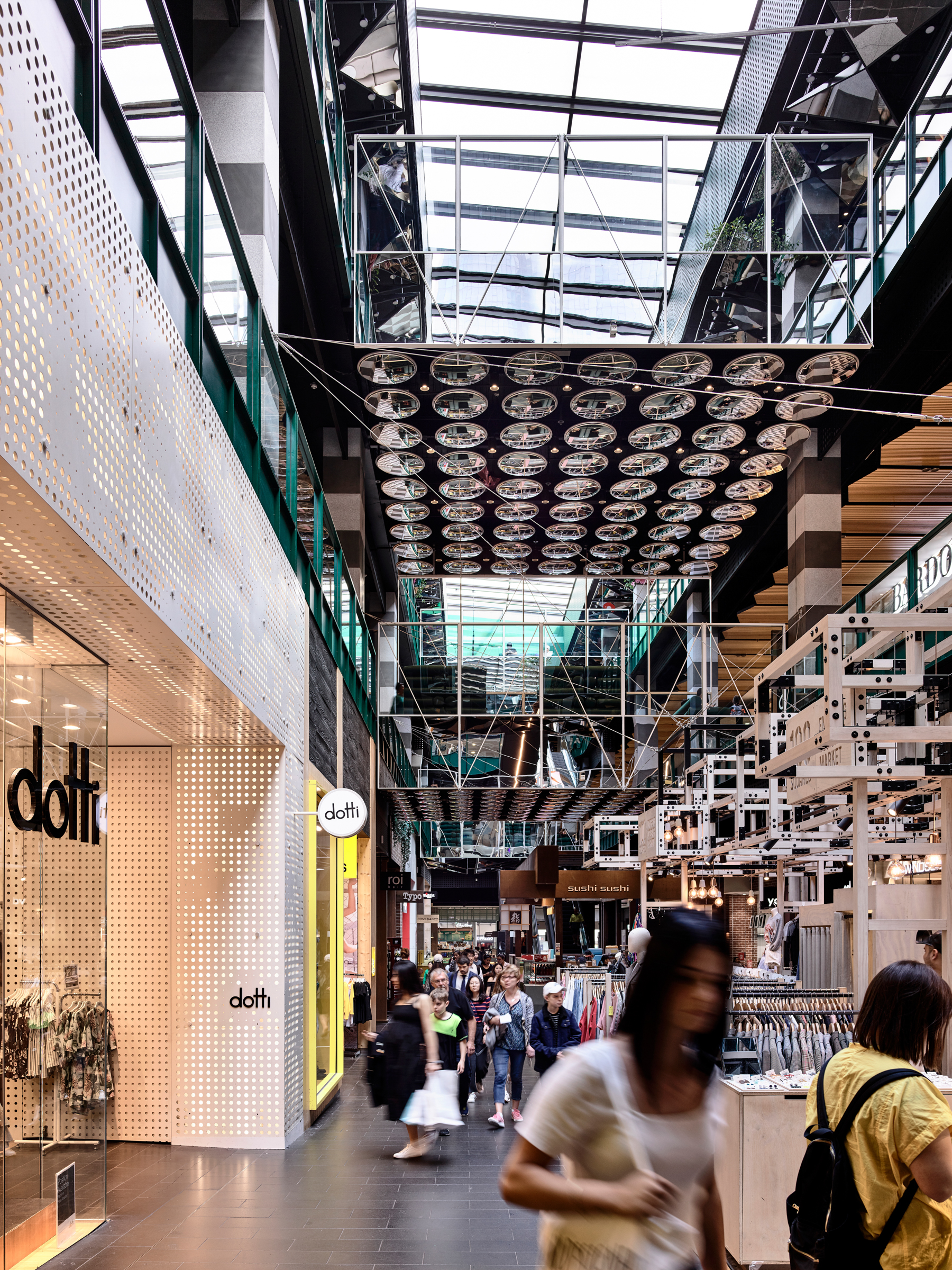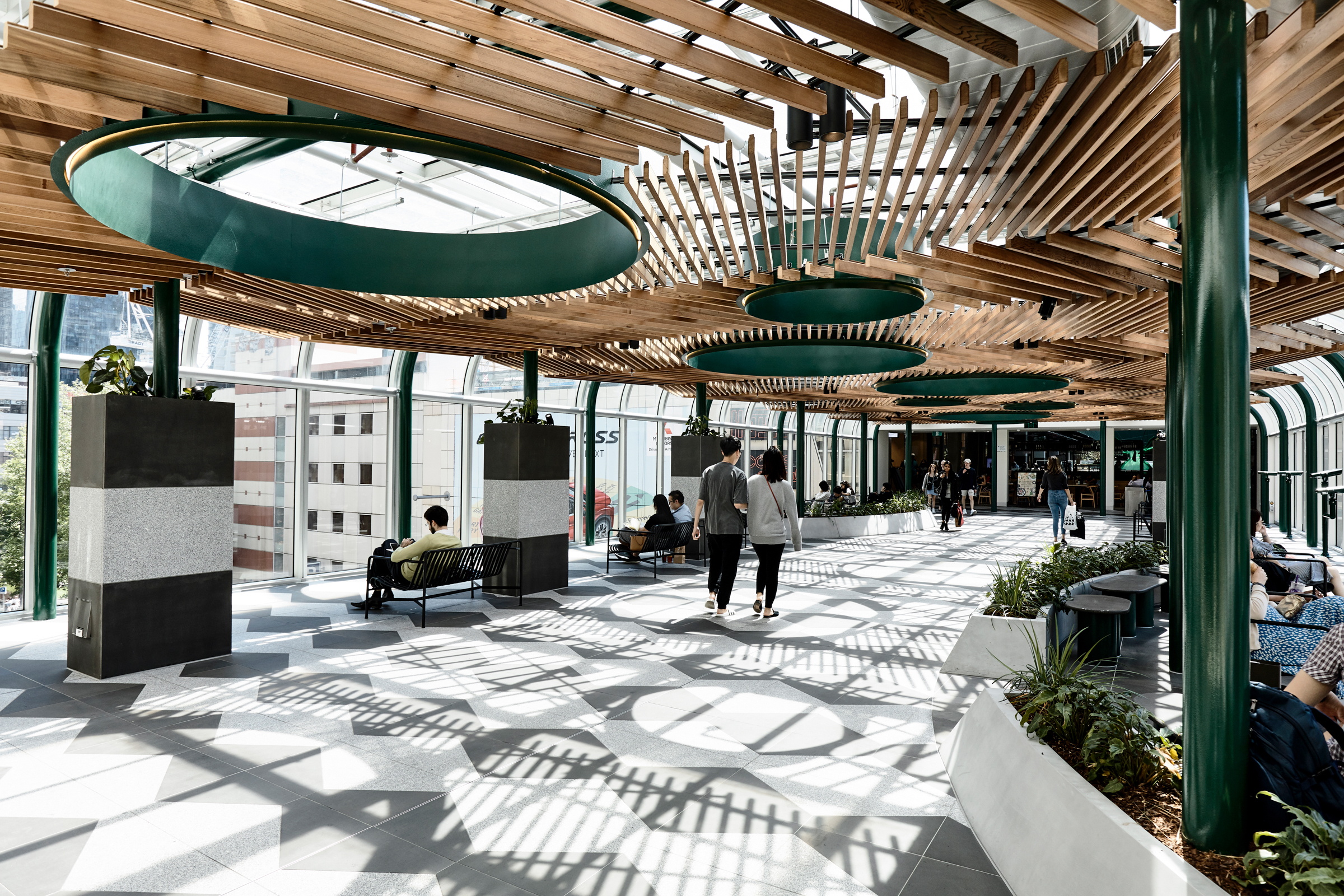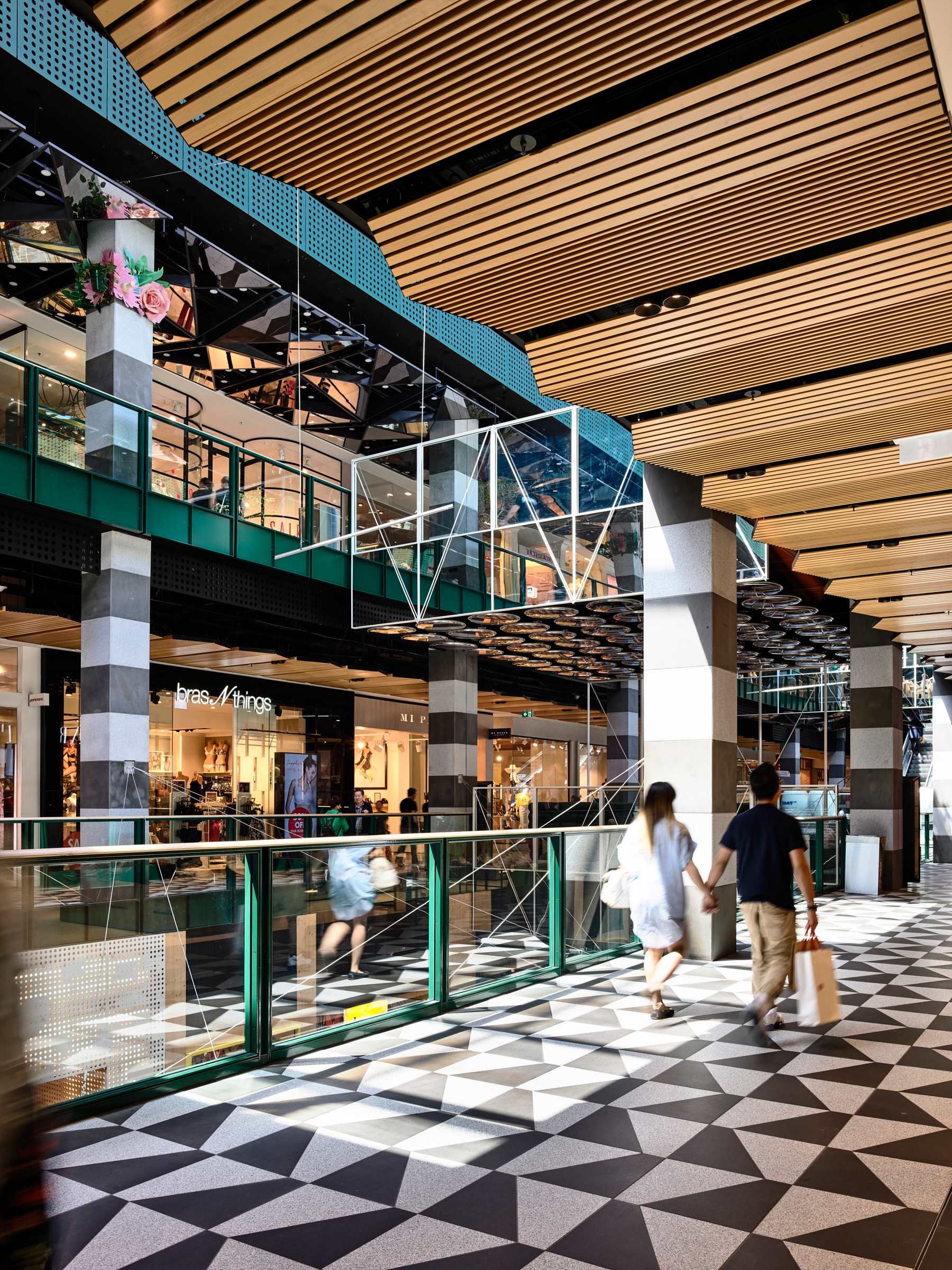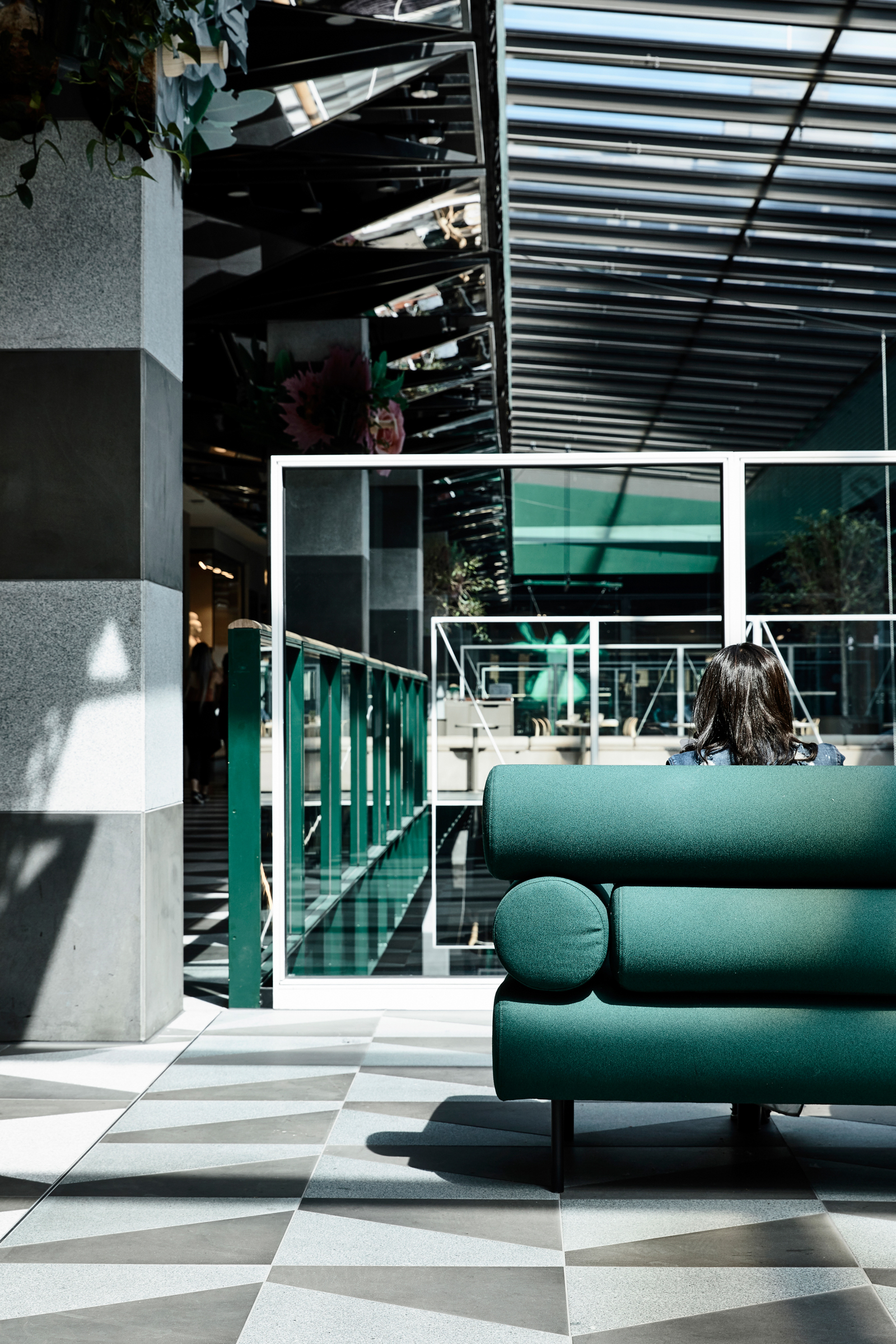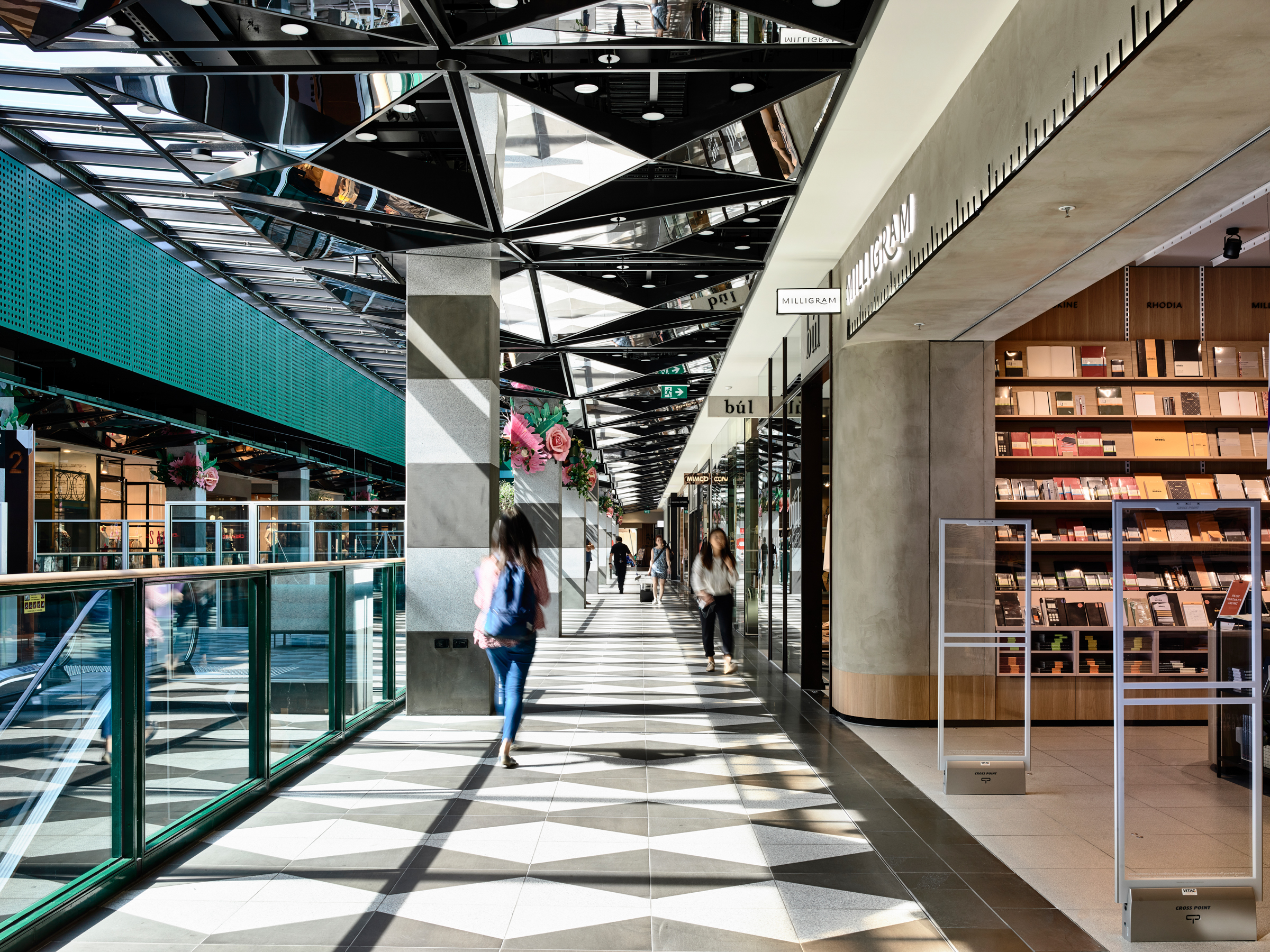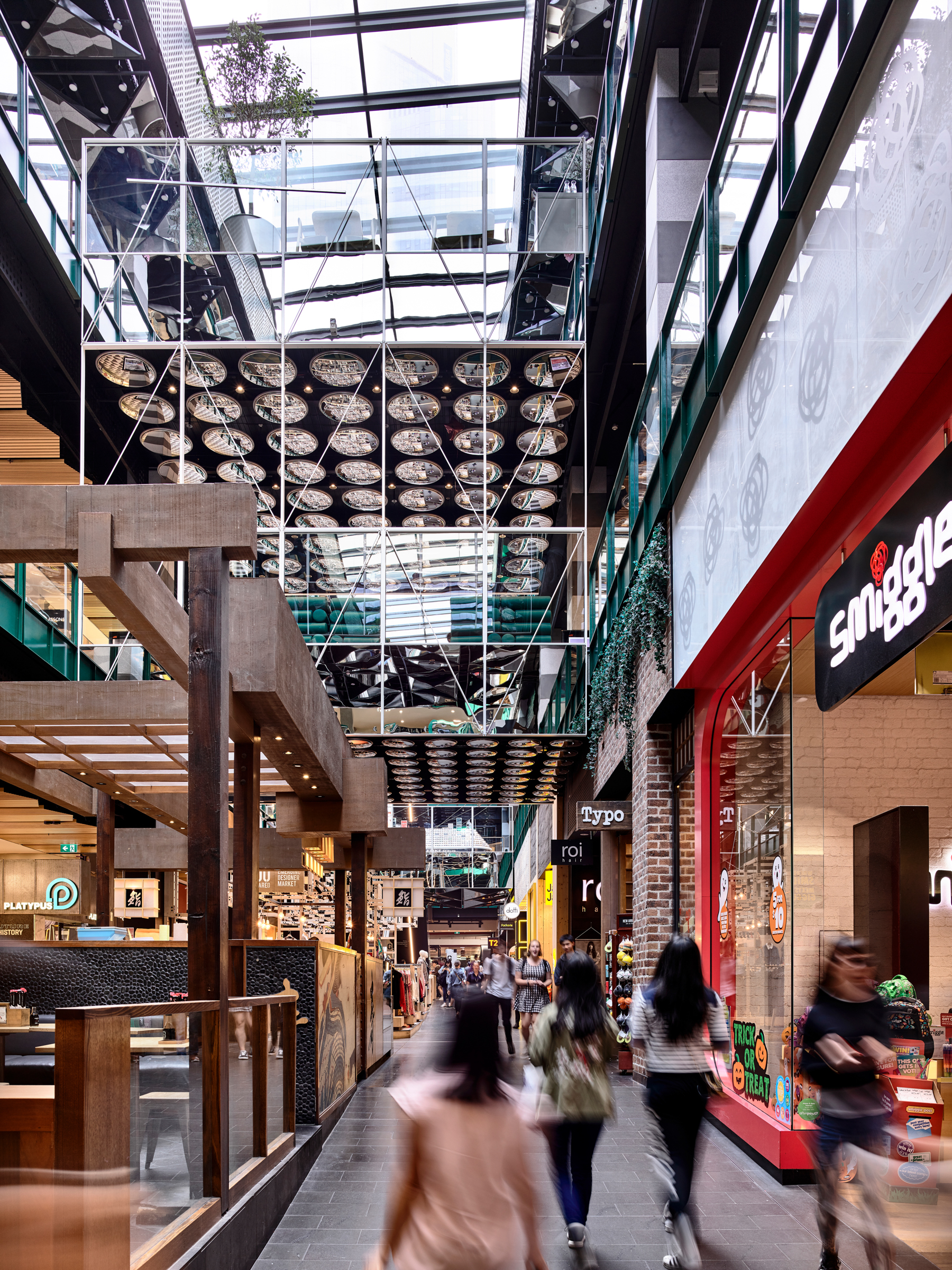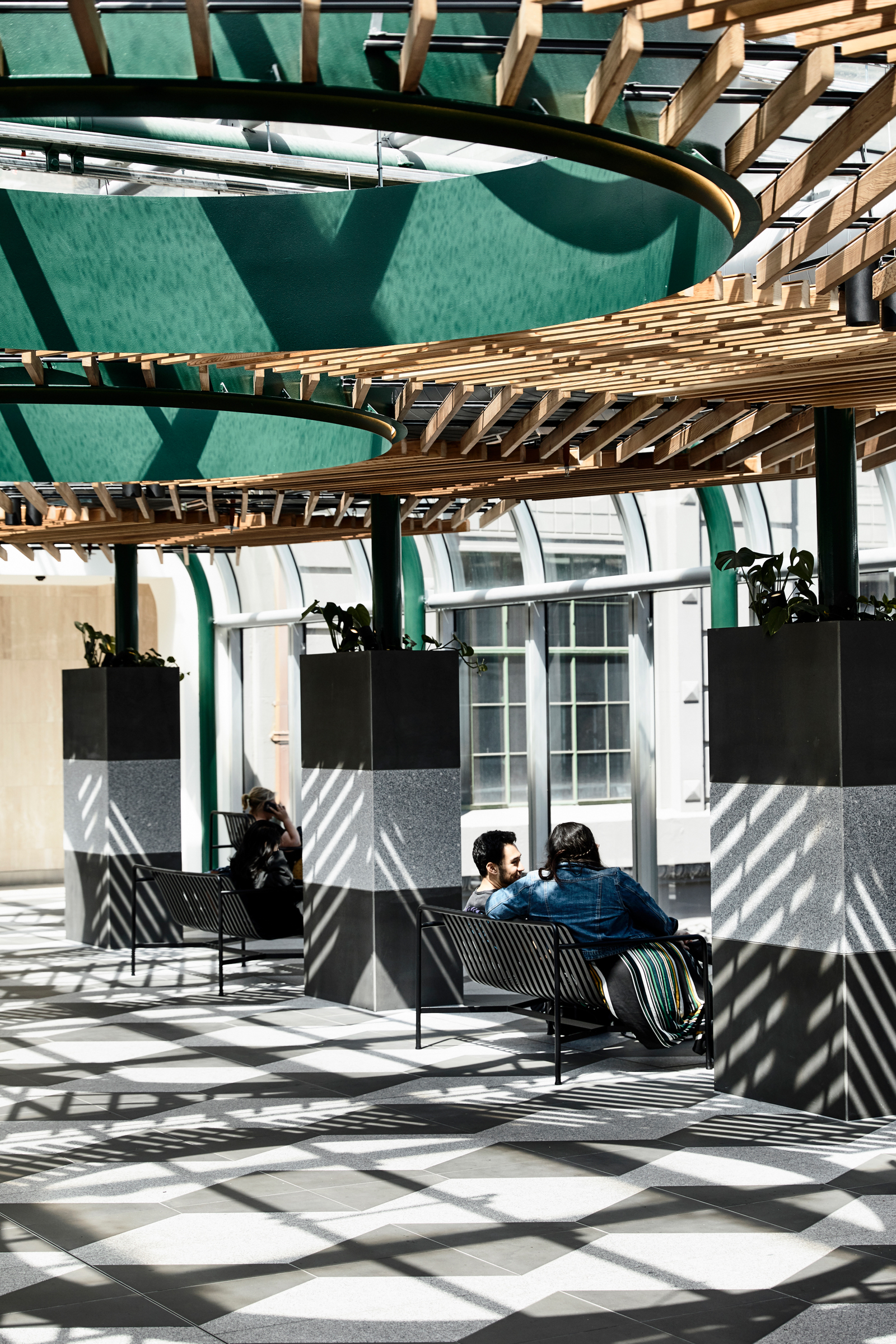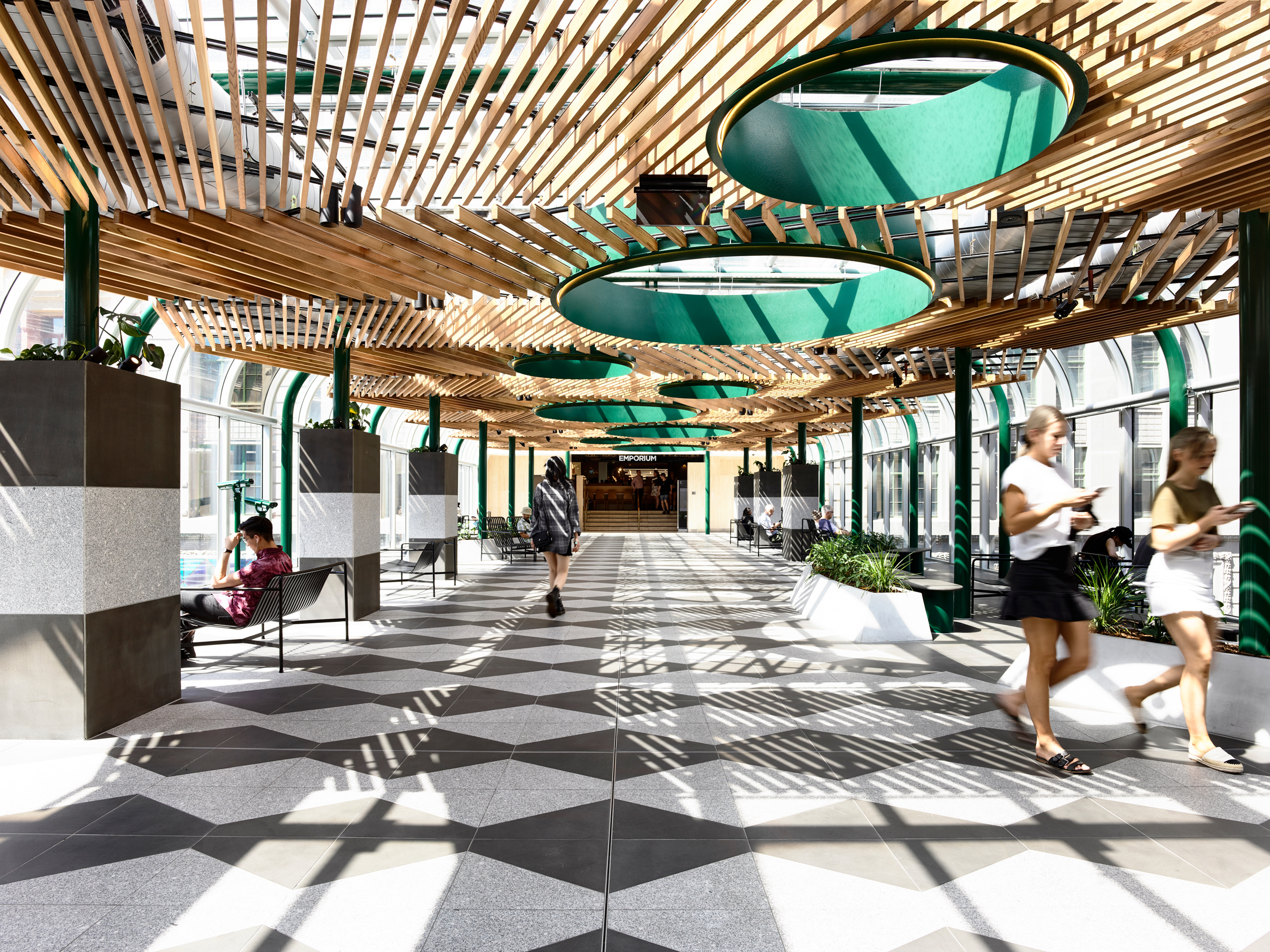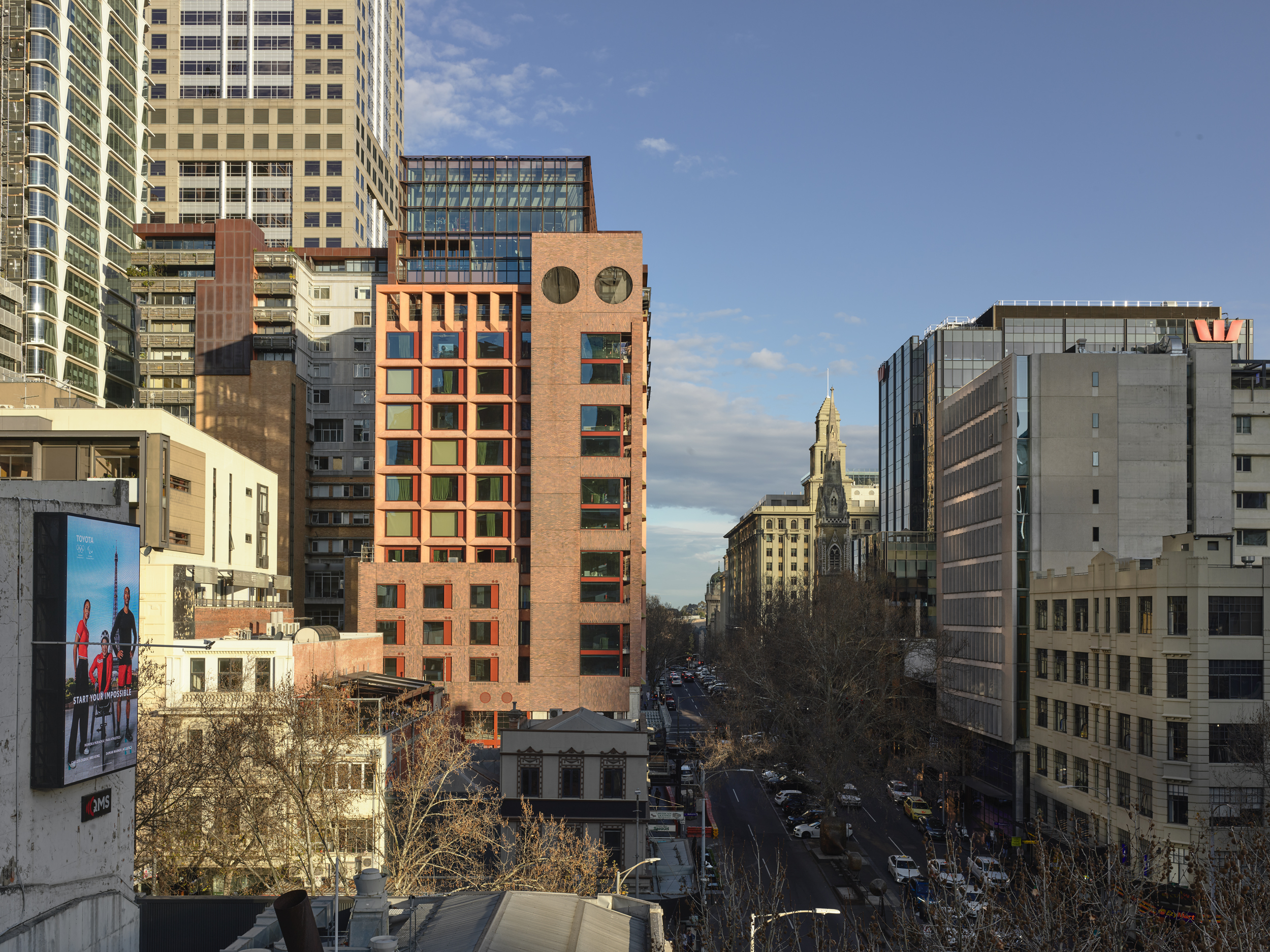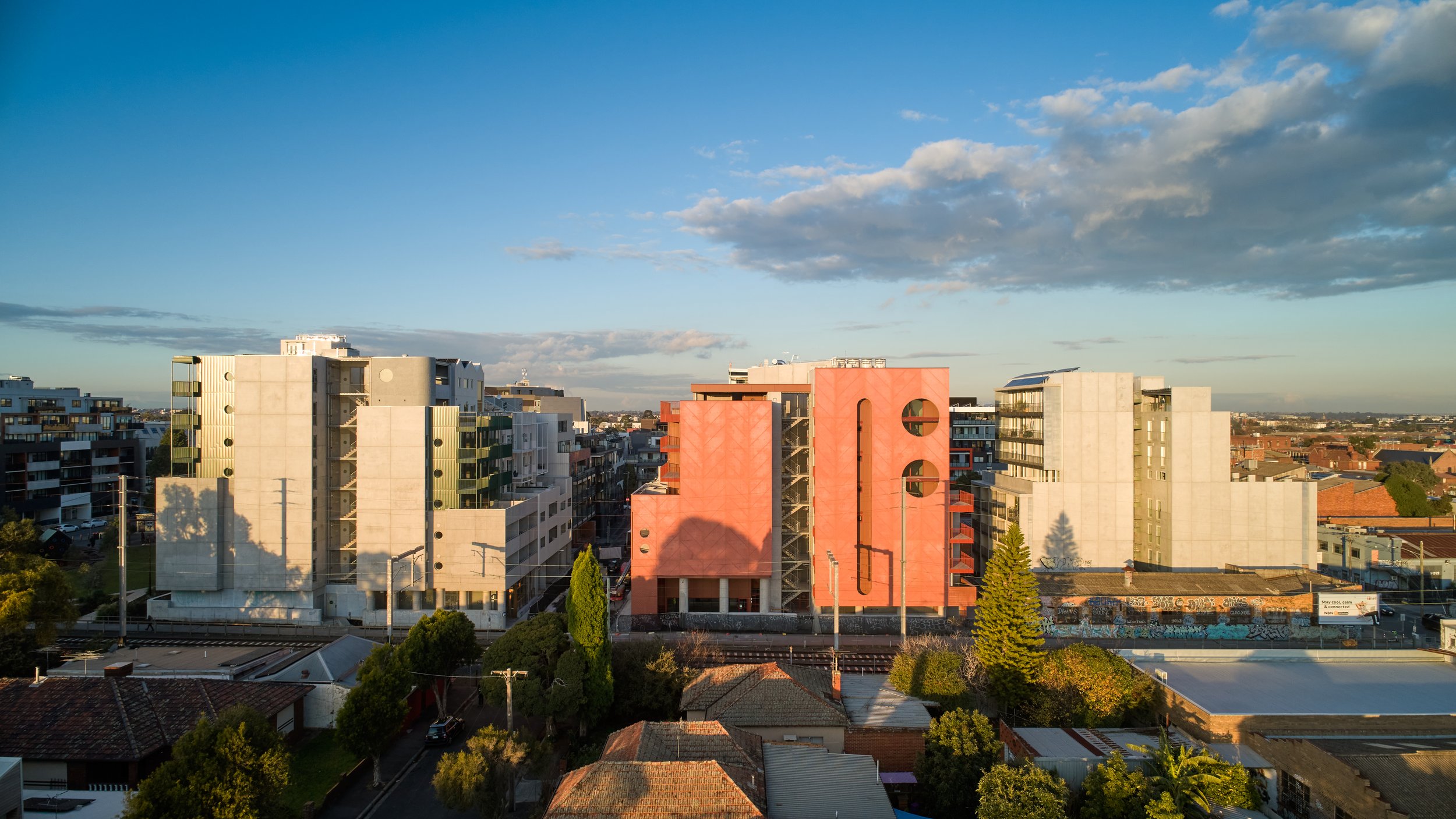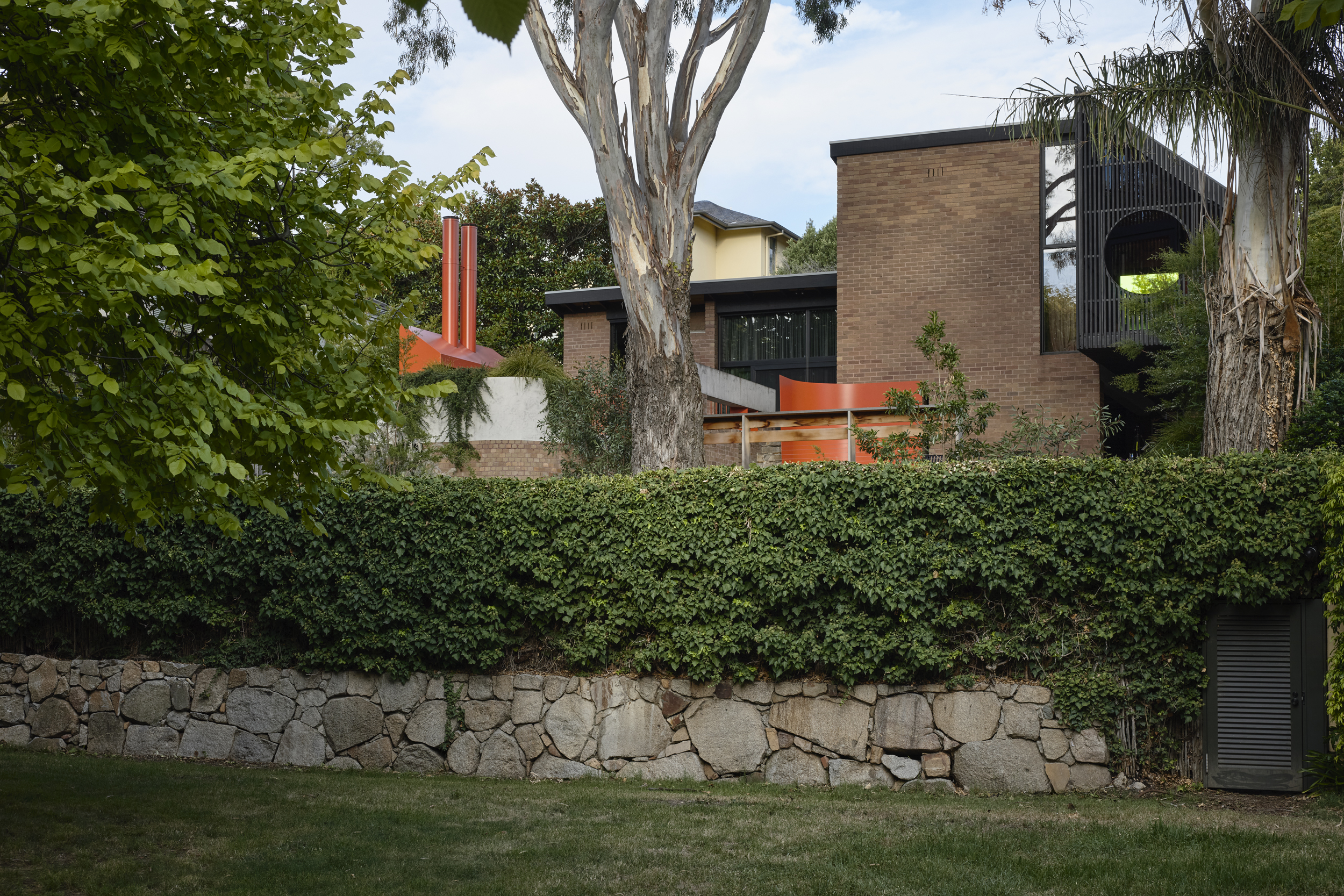Melbourne Central Arcade & Bridge
Melbourne Central Arcade & Bridge
Reinvigorating the arcades and bridge of Melbourne Central.
Traditional Land Owners: Wurundjeri People
Builder: Probuild
Photography: Derek Swalwell
Awards:
2019 Melbourne Design Awards: Winner - Interior Design Retail
Media:
Artichoke - Issue 68, Sept 2019
Architecture Australia - 'Pattern is king: Melbourne Central Arcade', Dec 2019
Our work on the Melbourne Central Arcades was the second of three tranches of work which sought to re-invigorate levels 1, 2 and 3 of the Melbourne Central arcades between Lonsdale Street and Little Lonsdale street. This project was a “refresh” after a multitude of incremental changes which had left the arcades cluttered and confusing and had also resulted in reduced traffic on the upper levels. Our work to reinvigorate the arcades focused on making them feel fresh and new, to restore cohesiveness but was also to be responsive to new ways they were being used.
The brief was extensively researched by our Client GPT and included a focus on a centre which actively engaged its main cohort of users – largely young people, many of whom used the centre as a safe place in the city, a kind of public sitting room or dining room or study.
Impactful change was required, but significantly, it had to be achieved with a very light touch. This was for a number of reasons; commercial – the centre needed to keep trading whilst works were undertaken; environmental – to reflect a growing consciousness of the waste involved in large scale re-constructions; demographic – the main users were comfortable in the informal, somewhat gritty environment of Melbourne Central and would be alienated by anything too slick or intimidating.
We looked for the elements we could manipulate or introduce with maximum effect:
Pattern - on a civic scale, evident in the floors and ceilings.
Colour - extensively introducing nature’s neutral, green.
Warmth and tactility – evident in the use of timber and stone.
Illusion - using mirror in a multitude of ways, reflecting, refracting, multiplying and to draw visitors upwards by making people and movement on the upper levels visible from lower levels.
Art - providing an armature for the inclusion of public art, from the video art in our basement portals to the suspended Sally Smart Green Angel.
Place-making – through the considered arrangements of loose and fixed furniture to make places for respite, conversation, study, socialising, reflection, meeting.
Plants – to take advantage of the well-documented positive effects, both psychological and to air quality.
